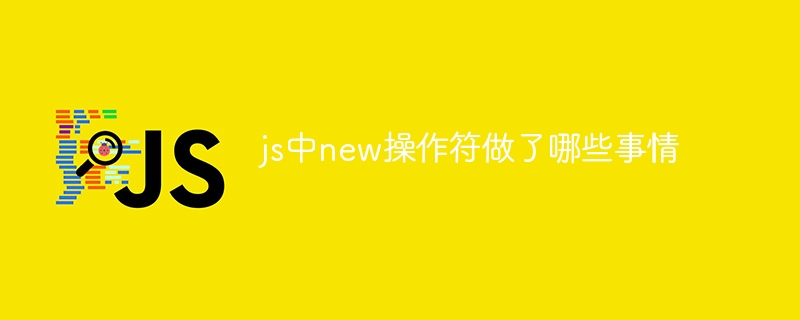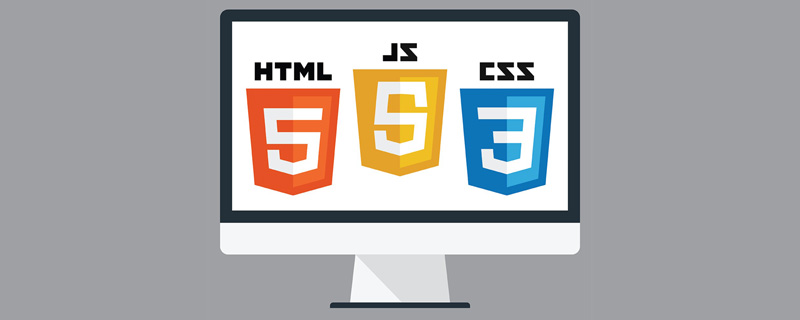 Web Front-end
Web Front-end JS Tutorial
JS Tutorial Singleton mode in JS implements addition, deletion, modification and query of data
Singleton mode in JS implements addition, deletion, modification and query of dataThis article mainly introduces the implementation of JS based on the singleton mode (Singleton) in the design pattern to encapsulate the function of adding, deleting, modifying and checking data. Combined with the example form, it analyzes the correlation of javascript based on the singleton mode and ajax for adding, deleting, modifying and checking the database. For operational skills, friends in need can refer to
This article describes the example of JS based on the singleton pattern (Singleton) in the design pattern to encapsulate the function of adding, deleting, modifying and checking data. Share it with everyone for your reference, the details are as follows:
Single-case mode
The core structure of the single-case mode only contains one called A special class of singletons. The singleton pattern can ensure that a class in the system has only one instance.
The original definition of the singleton pattern appeared in "Design Patterns" (Addison Wesley, 1994): "Guarantee that a class has only one instance. And provide a global access point to access it."
Singleton pattern definition: "A class has one and only one instance, and it instantiates itself to provide it to the entire system. ”
var Singleton = (function(){
SingletonClass() {
}
var singleton = null;
return {
getInstance: function() {
if (singleton == null) {
singleton = new singletonClass();
} else {
return singleton;
}
}
}
})();
Singleton.getIntance();The front end often uses some asynchronous operations related to interfaces such as addition, deletion, modification and query. Let's take an example. When I operate a data list, I often add the modify and delete functions. Some solutions use synchronous (refresh the page), and the user experience is better using asynchronous;
The code is as follows
Add function
$(".add").click(function(){
$.ajax({
type: "post"
dataType:"json",
url: "http://www.jb51.net/",
data: {name:"csdn博客",dir:"web前端"},
success: function( result ){
if ( result.status ) { alert("新增成功!") } else { alert("新增失败") }
},
error: function(){
alert("新增出现异步,请得新增加或联系技术管理员");
}
});
});Delete function
$(".del").click(function(){
$.ajax({
type: "post"
dataType:"json",
url: "http://www.jb51.net/",
data: {id:"1"},
success: function( result ){
if ( result.status ) { alert("删除成功!") } else { alert("删除失败") }
},
error: function(){
alert("新增出现异步,请得新增加或联系技术管理员");
}
});
});The above two code snippets briefly describe the JS code for adding and deleting functions. Some students discovered that they have something in common, that is, part of the ajax requests are the same, and what if the delete function is also used in other places? , then you need to write the same code in other places. I feel very uncomfortable
Let’s improve it
var SingletonCRUD = (function(){
SingletonClass() {}
SingletonClass.prototype = {
constructor: SingletonClass,
add: function( data ) {
$.ajax({
type: "post"
dataType:"json",
url: "http://www.jb51.net/",
data: data,
success: function( result ){
if ( result.status ) { alert("新增成功!") } else { alert("新增失败") }
},
error: function(){
alert("新增出现异步,请得新增加或联系技术管理员");
}
});
},
remove: function( data ) {
$.ajax({
type: "post"
dataType:"json",
url: "http://www.jb51.net/",
data: data,
success: function( result ){
if ( result.status ) { alert("删除成功!") } else { alert("删除失败") }
},
error: function(){
alert("新增出现异步,请得新增加或联系技术管理员");
}
});
}
}
var singleton = null;
return {
getInstance: function() {
if (singleton == null) {
singleton = new singletonClass();
} else {
return singleton;
}
}
}
})();
var curd = SingletonCRUD.getIntance();
$(".add").click(function(){
var data = {"name":"name"};
curd.add( data );
});
$(".del").click(function(){
var data = {"id": 1};
curd.remove( data );
});I often use Singleton instances to make some Tool tool classes;
The advantages of using design patterns: decoupling, strong readability, The code structure is clear;
Through the above small example, the acquisition data (click event function) and operation data (ajax request) in the click event are separated;
Through the singleton mode The optimized code:
var SingletonCRUD = (function(){
SingletonClass() {}
SingletonClass.prototype = {
constructor: SingletonClass,
ajax: function(url, data success ){
$.ajax({
type: "post"
dataType:"json",
url: url,
data: data,
success: success,
error: function(){
alert("新增出现异步,请得新增加或联系技术管理员");
}
});
},
add: function( data ) {
this.ajax("http://www.jb51.net/", data, function( result ){
if ( result.status ) { alert("新增成功!") } else { alert("新增失败") }
});
},
remove: function( data ) {
this.ajax("http://www.jb51.net/", data, function( result ){
if ( result.status ) { alert("删除成功!") } else { alert("删除失败") }
});
}
}
var singleton = null;
return {
getInstance: function() {
if (singleton == null) {
singleton = new singletonClass();
} else {
return singleton;
}
}
}
})();The above is what I compiled for everyone. I hope it will be helpful to everyone in the future.
Related articles:
How to use a child component to call a parent component in ES6
How to make a dynamic form in angular
Use $http to implement asynchronous uploading of Excel files in angularjs
The above is the detailed content of Singleton mode in JS implements addition, deletion, modification and query of data. For more information, please follow other related articles on the PHP Chinese website!
 如何使用JS和百度地图实现地图平移功能Nov 21, 2023 am 10:00 AM
如何使用JS和百度地图实现地图平移功能Nov 21, 2023 am 10:00 AM如何使用JS和百度地图实现地图平移功能百度地图是一款广泛使用的地图服务平台,在Web开发中经常用于展示地理信息、定位等功能。本文将介绍如何使用JS和百度地图API实现地图平移功能,并提供具体的代码示例。一、准备工作使用百度地图API前,首先需要在百度地图开放平台(http://lbsyun.baidu.com/)上申请一个开发者账号,并创建一个应用。创建完成
 js字符串转数组Aug 03, 2023 pm 01:34 PM
js字符串转数组Aug 03, 2023 pm 01:34 PMjs字符串转数组的方法:1、使用“split()”方法,可以根据指定的分隔符将字符串分割成数组元素;2、使用“Array.from()”方法,可以将可迭代对象或类数组对象转换成真正的数组;3、使用for循环遍历,将每个字符依次添加到数组中;4、使用“Array.split()”方法,通过调用“Array.prototype.forEach()”将一个字符串拆分成数组的快捷方式。
 如何使用JS和百度地图实现地图热力图功能Nov 21, 2023 am 09:33 AM
如何使用JS和百度地图实现地图热力图功能Nov 21, 2023 am 09:33 AM如何使用JS和百度地图实现地图热力图功能简介:随着互联网和移动设备的迅速发展,地图成为了一种普遍的应用场景。而热力图作为一种可视化的展示方式,能够帮助我们更直观地了解数据的分布情况。本文将介绍如何使用JS和百度地图API来实现地图热力图的功能,并提供具体的代码示例。准备工作:在开始之前,你需要准备以下事项:一个百度开发者账号,并创建一个应用,获取到相应的AP
 如何使用JS和百度地图实现地图多边形绘制功能Nov 21, 2023 am 10:53 AM
如何使用JS和百度地图实现地图多边形绘制功能Nov 21, 2023 am 10:53 AM如何使用JS和百度地图实现地图多边形绘制功能在现代网页开发中,地图应用已经成为常见的功能之一。而地图上绘制多边形,可以帮助我们将特定区域进行标记,方便用户进行查看和分析。本文将介绍如何使用JS和百度地图API实现地图多边形绘制功能,并提供具体的代码示例。首先,我们需要引入百度地图API。可以利用以下代码在HTML文件中导入百度地图API的JavaScript
 js中new操作符做了哪些事情Nov 13, 2023 pm 04:05 PM
js中new操作符做了哪些事情Nov 13, 2023 pm 04:05 PMjs中new操作符做了:1、创建一个空对象,这个新对象将成为函数的实例;2、将新对象的原型链接到构造函数的原型对象,这样新对象就可以访问构造函数原型对象中定义的属性和方法;3、将构造函数的作用域赋给新对象,这样新对象就可以通过this关键字来引用构造函数中的属性和方法;4、执行构造函数中的代码,构造函数中的代码将用于初始化新对象的属性和方法;5、如果构造函数中没有返回等等。
 用JavaScript模拟实现打字小游戏!Aug 07, 2022 am 10:34 AM
用JavaScript模拟实现打字小游戏!Aug 07, 2022 am 10:34 AM这篇文章主要为大家详细介绍了js实现打字小游戏,文中示例代码介绍的非常详细,具有一定的参考价值,感兴趣的小伙伴们可以参考一下。
 php可以读js内部的数组吗Jul 12, 2023 pm 03:41 PM
php可以读js内部的数组吗Jul 12, 2023 pm 03:41 PMphp在特定情况下可以读js内部的数组。其方法是:1、在JavaScript中,创建一个包含需要传递给PHP的数组的变量;2、使用Ajax技术将该数组发送给PHP脚本。可以使用原生的JavaScript代码或者使用基于Ajax的JavaScript库如jQuery等;3、在PHP脚本中,接收传递过来的数组数据,并进行相应的处理即可。
 js是什么编程语言?May 05, 2019 am 10:22 AM
js是什么编程语言?May 05, 2019 am 10:22 AMjs全称JavaScript,是一种具有函数优先的轻量级,直译式、解释型或即时编译型的高级编程语言,是一种属于网络的高级脚本语言;JavaScript基于原型编程、多范式的动态脚本语言,并且支持面向对象、命令式和声明式,如函数式编程。


Hot AI Tools

Undresser.AI Undress
AI-powered app for creating realistic nude photos

AI Clothes Remover
Online AI tool for removing clothes from photos.

Undress AI Tool
Undress images for free

Clothoff.io
AI clothes remover

AI Hentai Generator
Generate AI Hentai for free.

Hot Article

Hot Tools

EditPlus Chinese cracked version
Small size, syntax highlighting, does not support code prompt function

Dreamweaver CS6
Visual web development tools

WebStorm Mac version
Useful JavaScript development tools

SublimeText3 Mac version
God-level code editing software (SublimeText3)

DVWA
Damn Vulnerable Web App (DVWA) is a PHP/MySQL web application that is very vulnerable. Its main goals are to be an aid for security professionals to test their skills and tools in a legal environment, to help web developers better understand the process of securing web applications, and to help teachers/students teach/learn in a classroom environment Web application security. The goal of DVWA is to practice some of the most common web vulnerabilities through a simple and straightforward interface, with varying degrees of difficulty. Please note that this software





